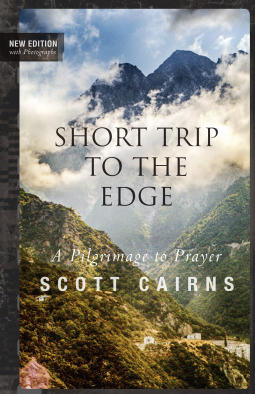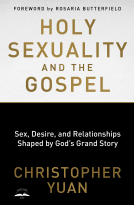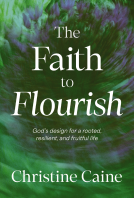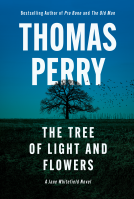
Short Trip to the Edge
A Pilgrimage to Prayer (New Edition)
by Scott Cairns
This title was previously available on NetGalley and is now archived.
Send NetGalley books directly to your Kindle or Kindle app
1
To read on a Kindle or Kindle app, please add kindle@netgalley.com as an approved email address to receive files in your Amazon account. Click here for step-by-step instructions.
2
Also find your Kindle email address within your Amazon account, and enter it here.
Pub Date Mar 28 2016 | Archive Date Jan 15 2016
Description
Originally published in 2007, this new, expanded edition of Short Trip to the Edge is the story of Scott's spiritual journey to the mystical island of Mt. Athos. With twenty monasteries and thirteen sketes scattered across its sloping terrain, the Holy Mountain was the perfect place for Scott to seek out a prayer father and discover the stillness of the true prayer life. Told with wit and exquisite prose, his narrative takes the reader from a beach in Virginia to the most holy Orthodox monasteries in the world to a monastery in Arizona and back again as Scott struggles to find his prayer path. Along the way, Cairns forged relationships with monks, priests, and fellow pilgrims.
Advance Praise
“Scott Cairns is not only one of the most vital poets of our time but also a prose writer of uncommon vision, and in Short Trip to the Edge, his account of his pilgrimage to the Holy Mountain of Athos, in northern Greece, he weaves together a personal history of faith, a wealth of learning, and the wisdom of the ages to create a book for spiritual seekers from every religious denomination. What better guide, and travel companion, than Scott Cairns? I would follow him to the edge—and beyond.” —Christopher Merrill, author of Things of the Hidden God: Journey to the Holy Mountain
“Mt. Athos is 'the edge' in more ways than one, a place both beautiful and ruggedly challenging, alive with spiritual power that shares the same qualities. Cairns is the ideal guide—relaxed, invitingly conversational, and often amused, but always evoking the awe that these mysteries deserve.” —Frederica Mathewes-Green
"A Short Trip to the Edge is an exceptional and compelling book. Scott Cairns has a poet’s eye and a story-tellers flair, so that mystical experience and profound theology are bodied forth in memorable images and vivid scenes, instead of being lost in abstraction. This book witnesses to the way ancient truths can become vivid, true and life-changing in the here and now. This is a short trip you will never forget." —Rev. Dr. Malcolm Guite, Girton College, Cambridge
Available Editions
| EDITION | Paperback |
| ISBN | 9781612617329 |
| PRICE | $16.99 (USD) |
Average rating from 5 members
Featured Reviews
 Michelle K, Reviewer
Michelle K, Reviewer
Short Trip to the Edge
A Pilgrimage to Prayer (New Edition)
by Scott Cairns
Paraclete Press
Christian
Pub Date Mar 28, 2016
I was given a copy of Short Trip to the Edge A Pilgrimage of Prayer by the publishers and there partnership with Netgalley for my honest review so here it is...In 2006 Scott Cairns first published Short Trip to the Edge an account of the first of three pilgrimages to Agion Oros or the Holy Mountain. This edition of the book includes beautiful black and white photos of the places visited on this Pilgrimage.
The trip to Oros was taken because Cairns wanted to deepen his prayer life. Short Trip to the Edge is about both a physical pilgrimage but about a Spiritual Pilgrimage as well.
I give this book five out of five stars...
Happy Reading...
 Conrade Y, Reviewer
Conrade Y, Reviewer
We have heard about pilgrimages of lands and terrains; distances and heights. What about the practice of prayer? In this book, Scott Cairns does both. Calling Mount Athos (Agion Oros) in Northern Greece a "Holy Mountain," Cairns has been making trips to encounter the meaning of being "inhabited by a holy presence." It is also the readying of the heart to encounter God not only in the speedy race of life but also the slowing pace of reflectiveness. Given time, even the slowest would eventually make the turn. Even the highest mountain would be climbed.
Organizing the pilgrimage of prayer in three phases, the first is the FAR effect as one sets out to make the journey. Eight reflections on eight different prayers are written to reflect the state of his heart. Referring to the boat tied to the pier, he ponders about how a person will ever make the voyage if he remains parked in the safety of the harbour. Lack of risk taking is essentially unbelief. Recognizing the deep mountain significance of the spiritual, Cairns refers back to the pilgrims, the desert fathers, and the saints of old to remind himself that many had already made such trips. Praying is about learning. Every pilgrim had a spiritual father.
He reflects on the Jesus Prayer, not so much about invoking God's appearance but to tune one's heart to prepare for the presence of God. He ponders on the prayer of the heart and how the repetitive praying softens our hardened hearts. There is also the feelings the surround him and his fellow travelers when they got lost, and their maps were old ones. New terrains were not mapped. Who do they seek help? One's faith is not really tested until one practices the pilgrimage of faith. His praying habits were rudely interrupted by surrounding events. From the weather to the noisy clatter, the daunting conditions challenge his normal practice of prayer as he toggles between distractions and intentions. He learns a kind of fear that attracts rather than repels. One of the best parts of the book is his interactions with the orthodox monks and spiritual fathers. Learning from these faith practitioners bring a lot of profound insights. There is something very pastoral and caring from these orthodox monks that impresses. One Father Iákovos even asks about the visitors' family and cares for them in a very humbling manner. Father Cosmás has that immense capacity to offer hospitality. The central desire of these monks is how their very lives embody the elements of prayer, even the entire prayers themselves.
Let me share five thoughts about this book.
First, there is something very intentional about the spiritual seeking of Cairns. This is something that impresses me. Beginning with an intent to learn prayer and to encounter God in deeper ways, he is relentless in seeking out spiritual fathers. He openly engages in conversations and interactions with pilgrims, monks, people who lived on the mountains, and participates in various orthodox rituals whenever he can. By walking instead of taking public transportation, he gets to see life on Mount Athos in its natural sense. People often appear surprised to see Cairns and his entourage at odd hours of the day, outside of the regular public transportation hours. As I think about it, it is reflective of us avoiding the regimental morning/evening devotional routines but to intersperse prayers and devotional thoughts throughout the day. For our God is not simply present in morning or late at night. God is always watching over us. Filled with lots of observations and examining of his own heart, what Cairns call a "short trip to the edge" is in fact a long journey of his inner heart to the heart of God. He learns that he has greatly reduced God in his own poetry and prayers and how his own work has unwittingly distanced him from God. Of all the beauty of the mountain and the people, what really drives home is the way people worshiped God. Only those with a real expectancy of the presence of God are able to do just that.
Second, this book reminds me of the tendency of gnostic religion among Christians. One example lies in the way that we compartmentalize our lives. I know of people who would observe with pious diligence their regular daily devotions (spiritual aspect) and live seemingly worldly lives (physical aspect). Some even claim to live integrated lives but their lifestyles reflect otherwise. The challenge is to move away from such dichotomous striving toward a more integrated living. With gnostic thinking, we may even pay undue attention to "holy places"as if these contain some magical air or mystical water. There is a temptation to think of "holy mountain" as some ethereal place that is different from other parts of the world. However, didn't God create the entire earth and called it good? Didn't God in Jesus came to redeem the world? Just like holy matrimony, what God has put together, let no man put asunder. It is a good experience to make trips to places like Mount Athos, and to experience the wonders and beauty of the place. Having done that, make sure that we do not elevate the place above what is more important: our heart with God. We go to the place because of our hunger for God and to experience God in a unique way. Having done that, once we leave that place, we cannot simply think that God is "stuck" there at Mount Athos. God is with us, whether we feel it or not.
Third, it is a pilgrimage, not a tourist attraction. Tourist attractions typically draw visitors for a momentary glimpse of the famous scene. Once all the selfies are taken, all the photoshots are made, and all the digital devices are filled with the images, they leave. Many would proceed to the next attraction, never to return. People who are tourists are not interested in people. They are more interested in themselves having been there and done that. Pilgrims are different. Like Cairns and his friends, they take time to mingle with the monks and spiritual guides they meet. In searching for a spiritual father, they encounter many profound moments where ordinary moments are viewed with a special awareness of the divine. It is not some extraordinary act that occurs within some ordinary place at any one time that impresses. It is the rising awareness of God that takes root inside the person. A pilgrim is not merely interested in the end goal (like the tourist). He is engaged in the whole journeying process, anticipating God's voice on every road, with every interaction with people, bearing with inconveniences, doing mundane things, and so on.
Four, the title is an invitation to a deeper journey. Just like the longest journey being from the head to the heart, the title of the book hints at the longer journey of prayer and faith when compared to the physical travels entitled: "Short Trip to the Edge." For me, even making one trip would have been an amazing experience. For Cairns, he has made 17 trips and he still wants more. Perhaps, he has tasted the sweetness of the journey that he wants more. The Scriptures say in Ps 37:4 to delight oneself in the LORD and He will give the desires of one's heart. It tells me of timelessness. It reminds me that where love and delight surrounds the person, whatever the distance is nothing. Like Jacob's love for Rachel that made 7 years of work seemed like days to him. In the presence of the arms of God, there is no need to rush (time). There is no worry about where we are (space). There is only delight that wherever we are, whenever we can notice, and whatever we do, God is always there, just like how the Psalmist in Ps 139 says.
"7Where can I go from your Spirit?
Where can I flee from your presence?
8If I go up to the heavens, you are there;
if I make my bed in the depths, you are there.
9If I rise on the wings of the dawn,
if I settle on the far side of the sea,
10even there your hand will guide me,
your right hand will hold me fast."
Finally, I appreciate this creative description of the learning of prayer. By infusing prayer throughout the book and the humility to keep learning how to pray, this book enables us to read it prayerfully. Many times, we read with the purpose of mining information. Due to the constant rush for deadlines, busyness with many other activities, and the incessant demands on our time, we can fail to listen to that soft whisper of God. There must be a reason why Paul teaches us to pray without ceasing (1 Thess 5:17). As children of God, our heavenly Father often wants to reach out and touch us. When we pray, we are more sensitive to this outreach from heaven to earth. We are more open to sense the touch of the Spirit in our hearts. We learn best to pray when we let God lead and guide us. The way that Cairns describes his learning is something we can all learn from. For all the detailed descriptions of his pilgrimage, do not miss out on his reflective moments that leave him wanting more of God, more pilgrimages, and more prayer.
Rating: 4.5 stars of 5.
conrade This book is provided to me courtesy of Paraclete Press and NetGalley in exchange for an honest review. All opinions offered above are mine unless otherwise stated or implied.
A 5 star reading experience. Scott Cairns has written of his personal spiritual journey to connect with the masters of prayer and therefore connect himself closer to God. As he travels around the world seeking spiritual masters, monasteries and education, he shares his own journey in a honest, forthright manner that is pleasing to the reader. This is a fascinating tale of seeking a new spiritual life in the most unexpected places around the globe. A enjoyable reading experience.
This book taught me about the Jesus Prayer, which I found beautiful and calming and enough.
I learned so much about the beauty of Greece, the holiness of venerating the icons, the dedication in choosing a monastic life, the wonder of Antidoron. I can see why a trip to Mount Athos has become a regular pilgrimage for the author.
I highly recommend this book if you're curious about the Eastern Orthodox Church or pilgrimages in general.
Readers who liked this book also liked:
Marie Bostwick
Historical Fiction, Literary Fiction, Women's Fiction


















